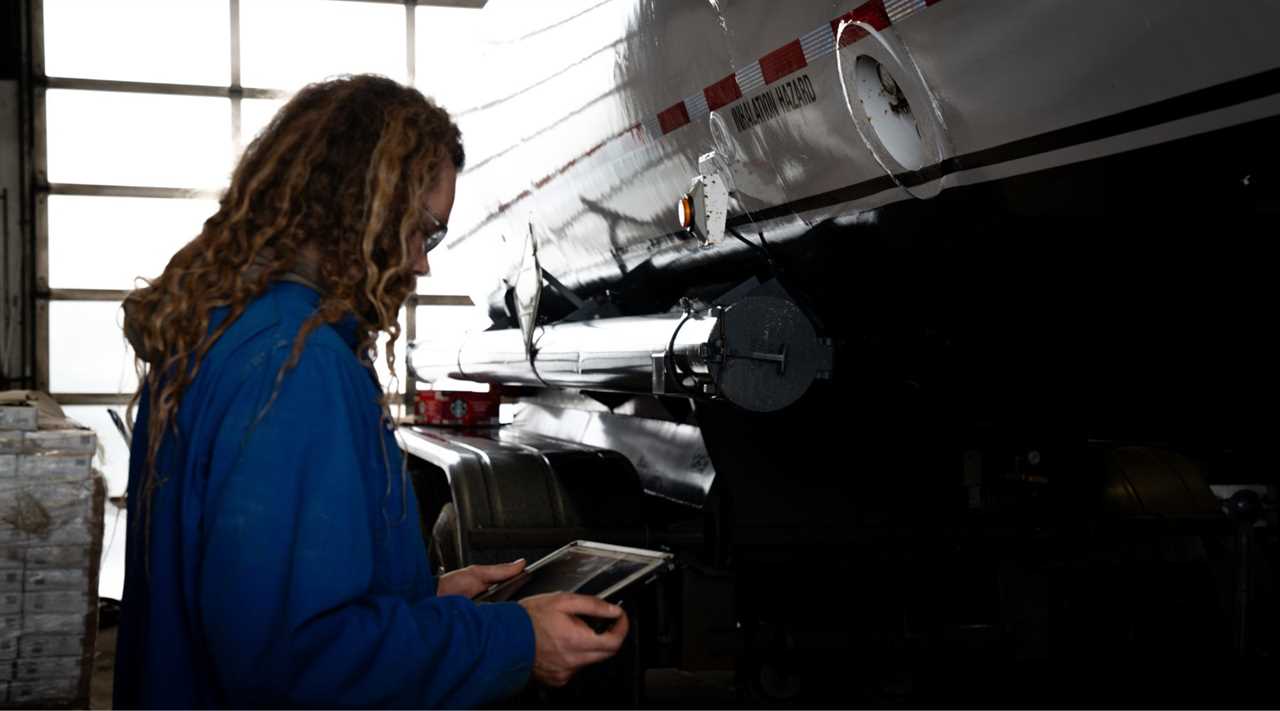As an industrial tank owner or operator in Alberta, staying compliant with CSA Standard B620 and API 653 regulations is essential. These standards mandate regular inspections to ensure the safe transportation and storage of dangerous goods. By conducting regular inspections, you not only enhance safety but also avoid costly failures, reduce downtime, and extend your tank’s lifespan by up to 25%.
Listen to the Article Summary
Why Regular Tank Inspections Matter
Imagine a catastrophic tank failure spilling hazardous materials, causing environmental damage and regulatory penalties. Regular inspections prevent such disasters. In Alberta, inspections must comply with CSA Standard B620 for the transportation of dangerous goods and API 653 for storage tank safety.
Key benefits of regular tank inspections include:
- Early detection of defects, reducing the risk of costly failures.
- Compliance with Alberta tank regulations, minimizing the risk of fines.
- Maintenance planning, which reduces downtime and boosts productivity.
- Extended tank life, saving on premature replacements.
Best Practices for Tank Inspections
To maximize the benefits of inspections, follow these best practices:
- Regular Inspection Schedules: Set a schedule based on your tank’s age, usage, and environmental factors.
- Advanced Techniques: Use cutting-edge methods such as ultrasonic testing and non-destructive testing for more accurate defect detection.
- Comprehensive Documentation: Maintain detailed records of inspections to ensure compliance and simplify audits.
Partnering with certified experts like Tru-Kare Tank & Meter Service guarantees adherence to API and OSHA guidelines, securing the integrity of your tanks. Utilizing advanced technologies like laser scanning and 3D modeling provides more accurate assessments and long-term monitoring.
Alberta Tank Inspection Regulations: What You Need to Know
In Alberta, tank owners must adhere to strict safety regulations, including CSA Standard B620, which governs the safe transportation of dangerous goods by tank vehicles. To remain compliant, it’s essential to:
- Certify Inspectors: Ensure your inspectors are certified under API 653 and CSA Standard B620.
- Follow Guidelines: Inspections must use approved techniques like Non-Destructive Examination (NDE) to assess tank integrity.
- Regular Testing: Testing frequency depends on tank design, contents, and operating conditions.
Staying compliant with these regulations reduces the risk of leaks, minimizes environmental hazards, and helps you avoid fines.
How Regular Inspections Save You Money
Regular inspections lead to significant cost savings. Here’s how:

- Early Defect Detection: Prevent expensive emergency repairs by catching problems early.
- Reduced Downtime: Scheduled inspections allow for better maintenance planning, minimizing interruptions.
- Tank Longevity: Extending your tank’s lifespan saves on premature replacements and repairs.
By following industry best practices, you can maintain compliance with Canadian Standards Association (CSA) and Transportation of Dangerous Goods Regulations (TDGR), reducing environmental risks and promoting a safer workplace.
Optimizing Industrial Tank Maintenance in Alberta
To keep your tanks functioning at peak efficiency, proactive maintenance is key. This involves regular inspections, condition-based monitoring, and predictive maintenance techniques. By implementing these strategies, companies can avoid unexpected failures, reduce downtime, and save on long-term costs.
Key elements of an effective maintenance plan:
- Routine Inspections: Regularly schedule tank inspections in line with CSA and API recommendations to ensure safety and compliance.
- Maintenance Cost Analysis: Prioritize and plan repairs to optimize your budget and allocate resources effectively.
-
Condition Monitoring: Use real-time data from inspections to proactively manage tank conditions.

Incorporating modern technology such as laser scanning, 3D modeling, and ultrasonic testing allows you to better predict tank service life and manage maintenance schedules, reducing operational risks.
Best Practices for Ensuring Compliance with Alberta Regulations
To ensure your industrial tank operations meet Alberta’s tank inspection standards, follow these steps:
- Regularly Train Inspectors: Certified inspectors are crucial for meeting changing regulatory standards.
- Document All Inspections: Keep detailed records to prove compliance and streamline audits.
- Stay Informed on Regulatory Updates: Alberta regulations change frequently; stay ahead by subscribing to updates from CSA and TDGR.
Compliance with Alberta's regulations not only ensures safety but also builds trust with stakeholders and enhances your company’s reputation.
Conclusion
Regular tank inspections in Alberta are essential for preventing costly failures, ensuring compliance with CSA Standard B620 and API 653, and extending the life of your tanks. By working with certified professionals and using advanced inspection techniques, you can protect your assets, reduce environmental risks, and enhance your company's bottom line.
Don’t wait until it’s too late—contact Tru-Kare Tank & Meter Service today to secure the safety and longevity of your industrial tanks.

